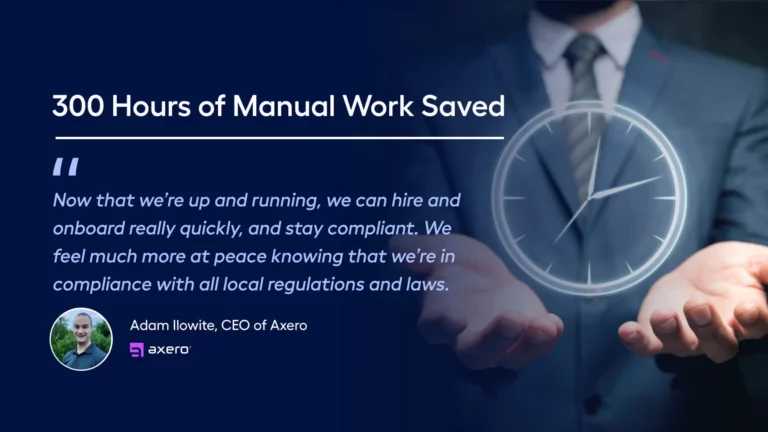By 2030, the gap between what will be needed to deal with what the World Economic Forum dubbed ‘the Fourth Industrial Revolution’ is stark. According to Korn Ferry’s new study ‘Future of Work: The Global Talent Crunch’, what will be available stands at a projected shortfall of 82.5 million workers—a little more than the total population of Germany. This could result in unrealised revenue of $8.5 trillion—equal to the combined GDP of Germany and Japan, currently the third- and fourth-largest economies in the world.
If that all sounds quite terrifying to you, well… It might be. Major sectors like financial services, manufacturing, and TMT (technology, media, and telecommunications) will be the most affected. And, with GDPs of some of the world’s most powerful nations facing a decrease as large as 12%, quite how the global economy would manage to ride the wave of this one is anyone’s guess. But the strategy for your organization to move through this tricky terrain may be one you may not be expecting. It’s one that favors patience and humanity in the face of an impending, tech-accelerated crisis.
Reframing How We View Education
Renowned futurist Heather McGowan posits that, in the future of work, the significance of human skill will only grow, even in this increasingly automated world. As everyday tasks disappear from the agenda, uniquely human skills such as critical thinking, emotional intelligence, and creativity will become more valuable and essential for success. The problem, however, is that the way you talk about work often hasn’t caught up with the way work needs to be talked about.
“We’re stuck in this paradigm of asking people what they want to be when they grow up, and [asking] each other what we do,” says McGowan. “Asking young people to think about the future when 55% of the jobs haven’t been created yet, and half of existing work can be replaced by automation is becoming an increasingly ridiculous frame to put around things.”
The business of the future needs to refocus its idea of recruitment. Balancing empathy with humility, you have to understand that old, narrow pathways will no longer suffice. The concept of ‘continuous learning’ crops up throughout our navigation of the crunch. Three-time Pulitzer Prize-winning commentator Thomas L. Friedman, book Thank You for Being Late: An Optimist’s Guide to Thriving in the Age of Accelerations speaks of a Western system of traditional youth education no longer sufficient. It cannot navigate the challenges of a modern age determined to outsprint us.
Individuals should be willing to learn, suggests Friedman, from anyone, anytime, and anywhere. We must seek to harness the resources available through technology and connectivity—lessons imperative for your organization to take heed of, too.
New Pipelines For Talent Crunch Recruitment
Beginning in the spring of 2021, the Great Resignation shook businesses awake. In acquiescing to employee requests for a more flexible professional environment, it also allowed businesses to freshen up their own ways of working. A lack of proactive planning led to a short-term focus when it came time for businesses to assess their talent requirements. The result? An over-reliance on external hiring, office-based roles, and producing inflexible job requirements which ostracized those who possessed transferrable skills and potential for growth. A complacency around talent availability also persisted; a thought that whenever the need should arise, talented candidates will be just around the corner. It’s safe to say the rose-tinted specs have been put to one side.
Now, as organizations fix their gaze on the global Talent Crunch looming on the horizon, new pipelines for high-skilled workers must open.
Firstly, the savvy business will look to collaborate with public institutions and source employees directly from school or college. This allows you to reinvigorate the workforce at a lower cost and with more time to learn on the job.
Secondly, there should be a determination to retrain or upskill current employees first, a move that addresses one of the key factors of the Great Resignation. Many managers noted ‘compensation’ and ‘work-life balance’ to be the two biggest factors in the exodus. But a recent McKinsey article read that 54% of resigning employees stated feeling undervalued by their organizations. 51% reported lacking a sense of belonging at their old workplace. Upskilling your current staff has been shown to improve morale, save on recruitment costs, and ensure an agile, more productive workforce with higher job satisfaction.
A Whole New World
Then, of course, there is the globalization of the search for talent. While many major nations are projected to be operating at a talent deficit with disastrous effects on their economies, one outlier is India. It is a market primed for expansion as the country—already the world’s fifth-largest economy—looks to overtake those above them. With a surplus of its uniquely young, skilled labor pool looking like a very interesting opportunity for a recruitment market, businesses are realizing quite how remote workers can be.
Canada is a great example of a market that could benefit from an increasingly global approach to solving its own, ongoing crunch. Every year Canada loses 7% of its population to the US, a brain drain seeing many high-skilled workers leave in search of higher wages. Nearly 80% of Canadian organizations needing tech employees but over two-thirds of Canadian businesses struggling to hire the skilled tech nous necessary for growth. But a blended strategy combining the hiring and training of local college talent, upskilling the existing employees, and introducing a more decentralized approach to its workforce provides a solid, economically-viable plan.
A longtime beneficiary of human capital flight, attracting the best and brightest with its high wages and visibility, the US is not exempt. The tumult promised by Talent Crunch recruitment woes, risks America’s status as the world’s tech leader. 10,000 baby boomers will move into retirement age each day for the next 19 years and the projected American labor shortages are alarming. By 2030, unrealised revenue could reach nearly $2 trillion, the equivalent of 6% of its entire economy.
The time to act is now.
How can Multiplier help your business in the Talent Crunch?
With a portfolio of over 150 countries that you could hire from, Multiplier is perfectly placed to help businesses maneuver their way through the upcoming talent deficit.
The age of hiring locally has long since passed, and when it comes to international opportunities to bring fresh blood onto your time, we take away time-consuming hurdles such as setting up a foreign entity to be compliant with local legislations. With Multiplier, you can provide seamless payroll potential employees, localized benefits, quick invoice generation, and faster contract drafting to ensure a smooth pathway to a bright, diversified team.
Book a demo and open up a world of international talent now.







